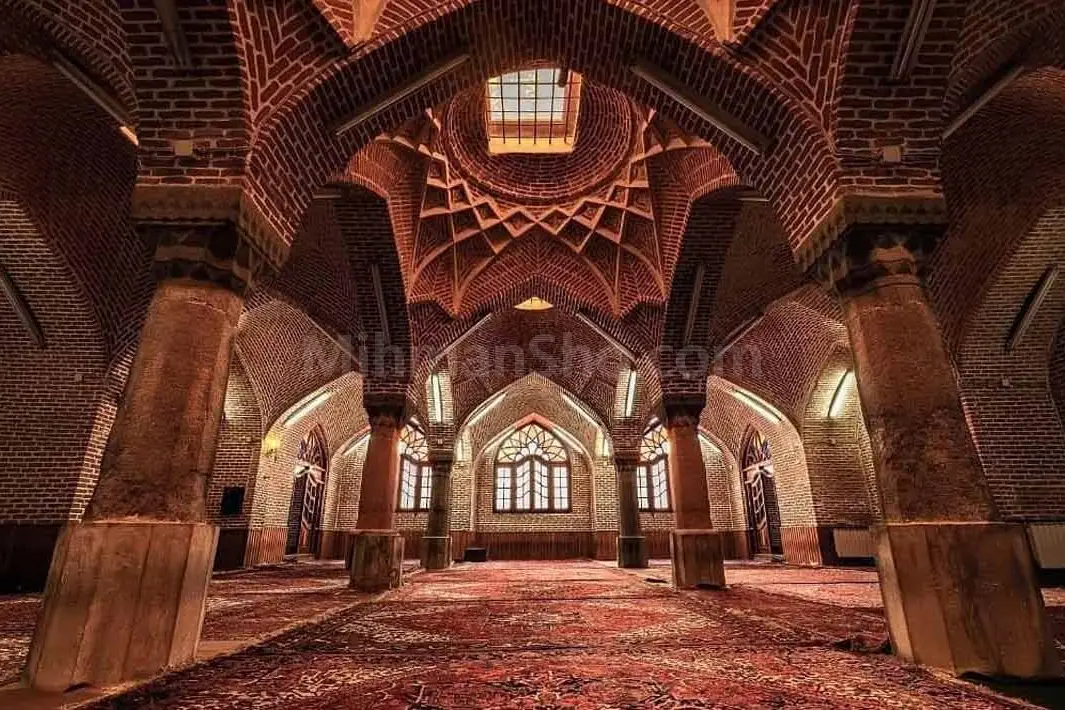Studying abroad can be an amazing experience. It broadens your perspective and helps you gain valuable skills and knowledge. Iran is a popular destination for international students, with many reputable universities and educational institutions offering a variety of practical programs and courses. However, like any other country, Iran has its unique requirements for foreign students.
If you’re considering studying here, it’s important to understand these requirements to make an informed decision. In this blog post, we’ll go over what you need to know about studying in Iran as a foreign student. Stay with us to learn more!
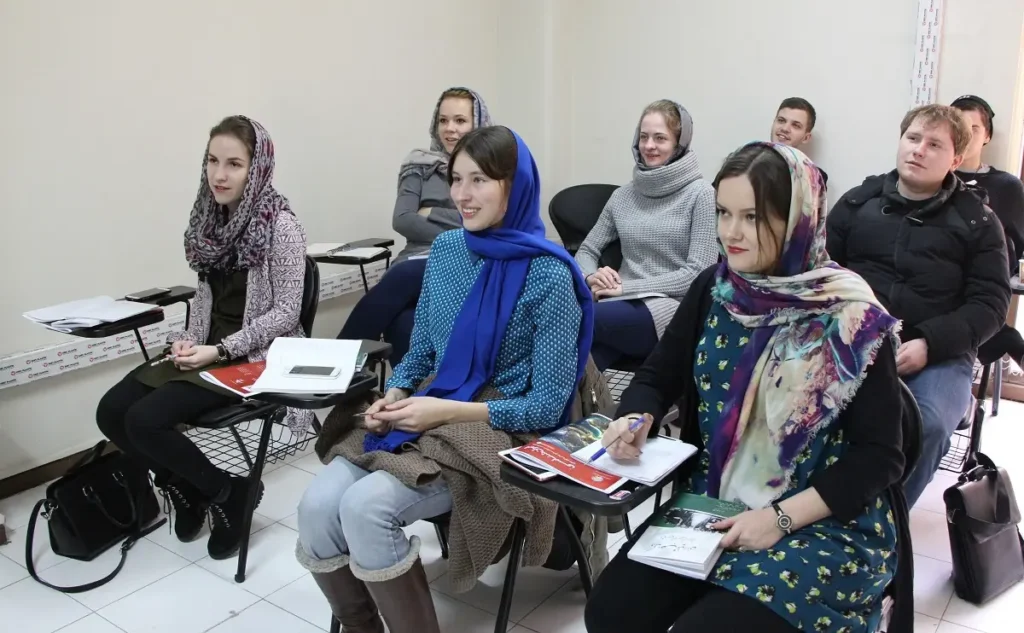
Applying to Iranian Universities
There are two main ways to apply to Iranian universities. The first is to independently search for universities that align with your academic and personal goals. Once you’ve identified the right institution, you can apply for admission by submitting the required documents and completing the application process. If you are accepted, you can then move on to applying for a student visa. This route requires you to handle all the steps on your own, including researching universities, preparing and submitting applications, and ensuring you meet the visa requirements.
The second option is to work with a certified agency like Visit Our Iran, which is officially recognized and specializes in assisting international students with university applications and student visas. Our team takes the complexity out of the process, offering two tailored solutions. If you prefer, we can manage everything for you, from university admission and visa processing to arranging travel and accommodation. All you need to do is provide the necessary documents, and we’ll handle the rest.
Alternatively, if you’d like to stay more involved, we offer step-by-step support to guide you through each stage of the process. With our expertise, you can avoid unnecessary stress and focus on preparing for an exciting academic experience in Iran.
Visit Our Iran University Application Support
With Visit Our Iran, you can choose between two options:
- We handle everything for you: If you prefer us to take care of everything, our team will manage the entire process from start to finish. From university admission and student visa application to travel arrangements and accommodation, we handle it all for you, so you can relax and focus on preparing for your studies.
- We support you through each step: If you want to be more involved, we provide support at each stage of the process. We’ll guide you through the application, document submission, visa processing, and other requirements, ensuring that you are fully informed and prepared.
Using these services ensures that you’ll receive the guidance you need for a smooth application process, from your first steps to setting up your new life in Iran. We’re here to help make your study journey a memorable and hassle-free experience. Contact us at Visit Our Iran, and we’ll help you get everything in place!
Introduction to the Universities of Iran
Iran is home to around 90,000 international students, with aims to increase this to 320,000. Iran’s universities have seen growing global recognition, with nine Iranian institutions ranking in the 2025 QS World Rankings. Here’s a breakdown of Iran’s university system, admission requirements, and top institutions.
State Universities
Admission to state-run universities is competitive, as many students in Iran aim to attend these institutions. Admission often requires passing a general examination, and applicants are usually expected to apply based on the region where they completed high school. After graduation, many students enter public service positions.
Non-State Universities
Iran is home to several prestigious non-state universities that offer a range of academic programs in various fields. These institutions, which operate independently of the government-run state universities, provide an alternative to the public education system. Many non-state universities in Iran are known for their high academic standards, modern facilities, and welcoming environment for international students.
The Islamic Azad University, Iran’s largest non-state institution, offers flexible programs with both day and evening classes. With numerous branches across Iran and even some international campuses, Islamic Azad University is accessible to many students and is particularly known for its adaptability in program scheduling and field options, making it a popular choice among those seeking an alternative to public universities.
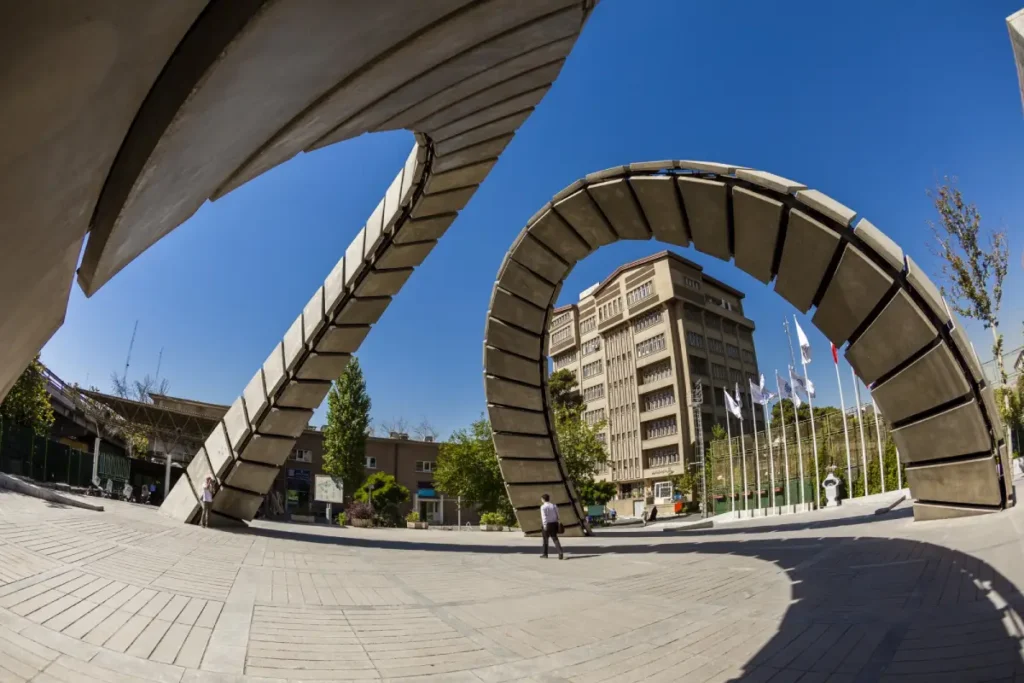
Top Universities in Iran
Nine Iranian universities were recently ranked in the 2025 QS World University Rankings, showing an upward trend in quality and global reputation. Some of the top-ranked universities include:
Sharif University of Technology (Ranked 342)
The Sharif University of Technology ranked as one of the top universities globally, specializes in engineering and physical sciences. It is highly competitive, admitting only the best students from across the country. Each year, around 1,000 new students pass the rigorous entrance exam to join.
Sharif University hosts international students from over 15 countries, offering a diverse community and an opportunity to experience Iran’s rich culture. It offers a range of undergraduate and graduate programs with tuition fees structured per unit and semester. There’s flexibility for students interested in transferring or attending as visiting students.
University of Tehran (Ranked 368)
The University of Tehran, the oldest university in Iran, is known for its research and academic excellence across various fields. The university offers a wide selection of bachelor’s, master’s, and doctoral programs, attracting students from around the world.
Admission here requires a minimum academic average, certified documents from previous educational institutions, and proficiency in Persian. Students from non-Persian-speaking countries can also take language courses offered by the university.
Most courses are taught in Persian, but with departmental approval, some lectures may be available in English or Arabic. You’ll benefit from a multicultural environment that encourages academic growth and personal development.
Amirkabir University of Technology (Ranked 403)
Commonly known as Tehran Polytechnic, Amirkabir University is renowned for its engineering and technical programs. It provides students with practical experience through lab work, research projects, and industry partnerships, preparing them for careers in various industries.
AUT is known for its active student life, with numerous clubs and organizations that cater to interests in sports, culture, science, and community service. You can join student societies in fields like computer science, architecture, or industrial design, or get involved in sports and cultural events.
Amirkabir University welcomes students from around the globe, offering support services to help you settle in and integrate into the university community. Admission requirements vary by program, so international applicants should check specific guidelines.
Iran University of Science and Technology (Ranked 436)
Iran University of Science and Technology has a long history as one of Iran’s oldest technical universities, specializing in science and engineering. It is known for its close links with industry and emphasis on research, offering students plenty of opportunities for hands-on experience and internships.
IUST offers a diverse range of undergraduate and graduate programs and has a strong research focus. Students can participate in interdisciplinary research, making IUST an ideal choice if you’re interested in pursuing innovative studies in technology.
The campus, located in northeast Tehran, features extensive labs, libraries, and sports facilities. IUST encourages students to get involved in cultural and social activities, and sports teams at IUST frequently compete at the national level.
Studying at one of these universities in Iran is an enriching experience, combining quality education with a vibrant cultural environment. Whether you’re interested in technology, engineering, or humanities, these universities offer a range of programs and support to help you thrive in your academic journey.
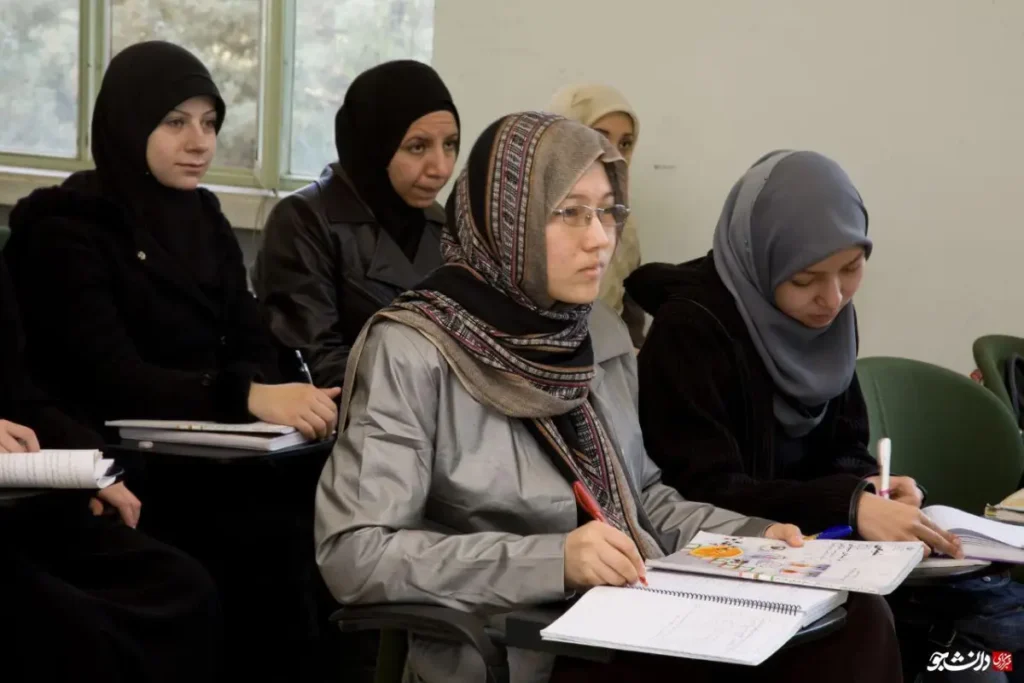
Isfahan University of Technology (Ranked 489)
Located in the scenic city of Isfahan, Isfahan University of Technology (IUT) is one of Iran’s premier public universities, renowned for its engineering and technology programs. Situated on a spacious campus near Azadi Square, IUT offers a peaceful environment with beautiful gardens, modern facilities, and a welcoming community.
You can study in fields like engineering, science, agriculture, and management, with programs available at bachelor’s, master’s, and Ph.D. levels. The university has over 600 professors and 15,000 students, fostering a dynamic and diverse academic atmosphere. Admission is highly competitive, primarily for students who score in the top 10% on the national entrance exams.
IUT’s research centers are highly regarded, making it a great place for those interested in innovation and scientific exploration. The university has also earned international recognition in fields like business and chemical engineering, and it’s known for its sustainable practices, ranking among the top “green” universities in Iran.
Tabriz University (Ranked 552)
Located in northwest Iran, the University of Tabriz is known for its emphasis on science, technology, and art. The university has a strong international program and provides support for foreign students, from accommodation to visa assistance. Tabriz is a culturally rich city with a unique historical atmosphere, which international students often enjoy.
The university offers dormitory options for international students, usually accommodating four to five students per room, with separate spaces for female students. Classes are generally conducted in Persian or English. If you’re not proficient in Persian, you can take Persian language courses to improve your skills. For English-speaking students, proficiency in TOEFL or IELTS can exempt them from additional language classes, making the transition easier.
Shiraz University (Ranked 691-700)
Shiraz University, located in southern Iran, is another well-known institution with a strong international presence. It offers a welcoming environment and seeks to attract talented students from around the world. Shiraz University admits foreign students based on GPA requirements, with additional scholarships available for those from neighboring countries.
To ensure smooth integration, Shiraz University offers an intensive Persian language course, so you can become proficient in the local language while studying here. The university requires students to meet a minimum GPA each semester to maintain admission status, so academic commitment is important.
As a student, you’ll also have access to various cultural activities, sports facilities, and clubs, allowing you to experience life in Iran outside of the classroom. The city of Shiraz itself is famous for its gardens, historical sites, and friendly residents, adding to the appeal of studying here.
Pardis International Campuses
Pardis International campuses are affiliated with Iran’s major state and non-state universities, offering an alternative tuition-based programs. These campuses operate separately from the standard day and night programs, providing international students with a unique opportunity to study in Iran. You can apply for these programs through both exam-based and non-exam admissions, depending on the campus and the program. Understanding the Pardis International options and the application process can help you make an informed decision.
Pardis International campuses are tuition-based branches. They offer flexible admission processes: you can apply through the nationwide entrance exam or via a university-specific entrance exam and interview process. For some prestigious universities like Amirkabir University of Technology and Sharif University of Technology, an interview may be required before final admission. However, most Pardis International campuses admit students without interviews, using a centralized admission system.
Admissions and Requirements
For specific programs, certain Pardis campuses may ask for additional requirements such as language proficiency exams or academic records, especially for graduate-level programs. Make sure to check the application details of each Pardis International campus to know the exact requirements for your program of interest.
List of Top-Ranking Pardis International Campuses
Many well-known Iranian universities have Pardis International campuses, including:
- Pardis International Campus of Mazandaran University in Mazandaran
- Pardis International Campus of the University of Tabriz in Aras
- Pardis International Campus of the University of Tehran in Qom
- Pardis International Campus of the University of Tehran in Aras
- Pardis International Campus of the University of Tehran in Kish
- Pardis International Campus of the Sharif University of Technology in Kish
- Pardis International Campus of Amirkabir University of Technology in Kish
- Pardis International Campus of Ferdowsi University of Mashhad in Mashhad
Additionally, many Islamic Azad and Payam Noor University branches offer Pardis International campuses.
Who Are Pardis International Campuses For?
Originally, Pardis International campuses were created to attract international students from diverse countries. Over time, they also began accepting Iranian students who may not have gained admission to standard public universities. Today, these campuses provide both international and domestic students with quality education options within Iran’s leading universities, making them ideal for those seeking flexible, high-quality educational opportunities in Iran.
Levels of Higher Education in Iran
Iran’s higher education system includes:
Bachelor’s programs: 4 years
A bachelor’s degree in Iran typically takes four years to complete. During this time, students focus on their chosen field of study, completing required courses, projects, and exams. The first few years usually involve foundational courses in general subjects, while the later years focus on more specialized topics in the chosen major. Upon completion, students are awarded a Bachelor’s degree, which qualifies them to enter the workforce or pursue further studies in a master’s program.
Master’s programs: 2 years
Master’s programs in Iran generally take two years to finish. These programs allow students to specialize further in their chosen field, with a mix of advanced coursework, research, and sometimes practical experience. Students may also be required to write a thesis or complete a final project as part of their graduation requirements. A master’s degree opens up more advanced career opportunities and is a prerequisite for those wishing to pursue doctoral studies.
Doctoral programs: 4-5 years
Doctoral programs in Iran usually take between four to five years to complete. These programs are research-intensive and designed for students who want to become experts in a specific academic field. Doctoral candidates are expected to conduct independent research, contribute new knowledge to their field, and write a dissertation that is based on their research findings. Doctoral studies are the highest level of academic education and typically lead to careers in academia, research, or high-level professional roles in various industries.
All levels are planned and regulated by Iran’s Higher Council for Planning. Programs are mostly compulsory with some elective courses available.
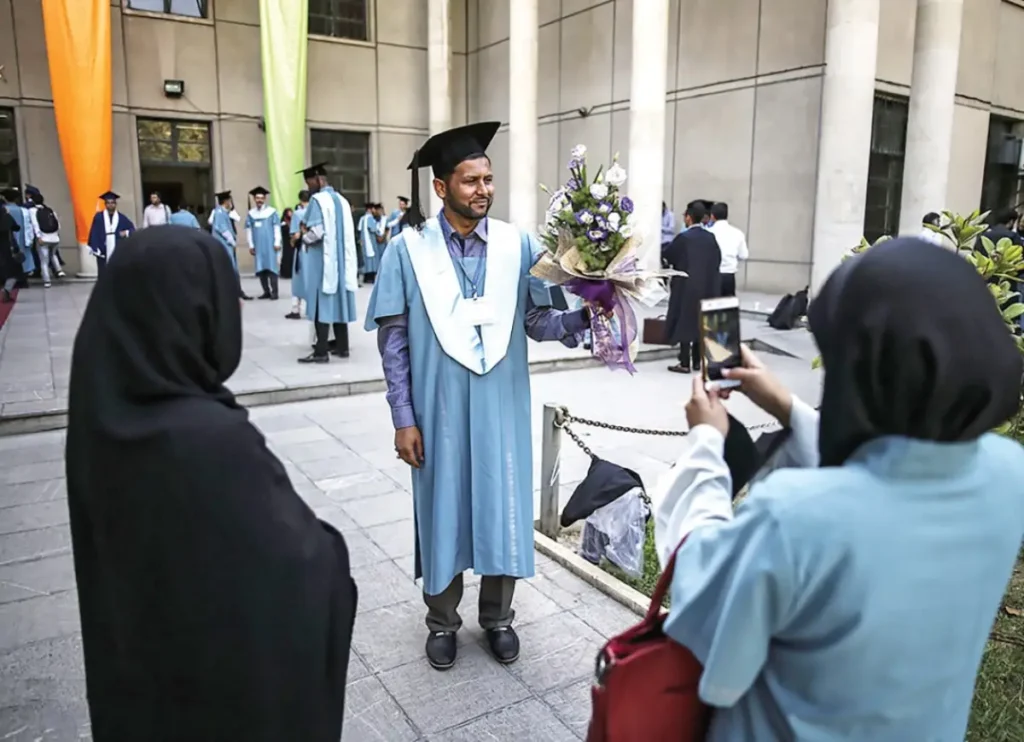
A Step-by-Step Guide for International Students
If you’re an international student looking to study in Iran, there are a few essential steps you’ll need to follow to apply and gain admission. A unique feature of the process is obtaining a special identification code known as the SAORG code, which is issued by Iran’s Ministry of Science, Research, and Technology. This code is essential for international students because it helps verify your student status and is also used by immigration authorities for security purposes.
The application and registration process may vary slightly based on the institution and your home country, but here’s an easy guide to get you started:
1. Contact the Institution
Start by reaching out to the Iranian university or college where you wish to apply. They will provide you with detailed information about the requirements for international students and guide you on the necessary documents and steps.
2. Check Visa Requirements
International students need a valid student visa to study in Iran. Make sure to check the visa requirements for your country and prepare all the required documents in advance.
3. Submit an Application
Once you have all the information, you can start your application. Most institutions offer an online application form that you’ll need to complete. Fill it out carefully to ensure all details are accurate.
4. Send in Required Documents
You’ll likely need to submit documents like transcripts, language proficiency scores, and a copy of your passport. Be sure to double-check all document requirements to ensure nothing is missing.
5. Pay Application and Tuition Fees
International students may have to pay additional fees, such as tuition, application, and visa fees. Be sure you understand the fee structure and make any necessary payments on time.
6. Obtain Health Insurance
Many institutions require international students to have health insurance during their stay. Check with the university for specific health coverage requirements and purchase the necessary insurance.
7. Attend an Orientation Session
After admission and registration, you might be asked to attend an orientation session. This is a great way to get familiar with your new institution, learn about the available services, and meet other international students.
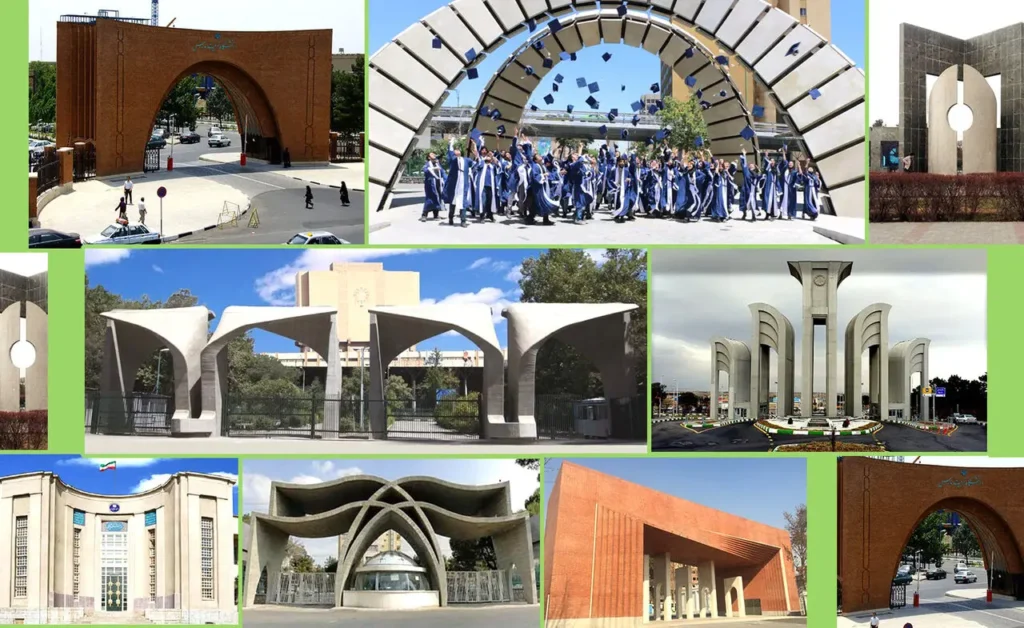
Housing Options for International Students at Iranian Universities
As an international student in Iran, you’ll find housing options both on and off campus to suit different lifestyles and preferences. Many universities, such as the University of Tehran, offer dedicated on-campus dormitories for international students, providing a convenient and community-centered living experience. If you prefer to live off campus, the university can assist in arranging suitable housing nearby. Some students even choose to rent apartments with friends or other students, sharing the experience and the cost.
Off-Campus Housing
Off-campus dormitories are also a popular option, especially for those looking for a bit more independence. These accommodations are generally close to campus and easily accessible by public transportation. Living off-campus also means easy access to city amenities like shopping centers, parks, and supermarkets. The university’s housing office can assist you in finding reliable off-campus housing.
Dormitory Facilities
Dorms offer comfortable, furnished rooms accommodating 2 to 6 students. Rooms come equipped with essentials, including beds, desks, chairs, sofas, and closets. You’ll also have access to a television, hard-wired internet, and Wi-Fi in each room, ensuring you can stay connected for your studies and personal needs.
Each dormitory apartment includes a shared kitchen, washing machine, and ironing board for students. A team of trained staff provides regular cleaning and maintenance services, so you can focus on your studies and enjoy your time with friends. Dorms also feature common areas like lobbies with armchairs and sofas where students can relax and connect, while additional facilities include prayer rooms, cyber rooms with computers and high-speed internet, and lockers for personal items.
Education in Iran Is Affordable!
Don’t forget, studying in Iran can be an affordable option for international students, offering lower tuition fees and reasonable living expenses compared to many other countries. The costs of studying in Iran can vary based on your program, university, and the city where you’ll live. However, overall, the costs are often much lower than in Western countries.
In Iran, international students generally pay less tuition compared to many other regions. The exact fees depend on your field of study and chosen university, but on the whole, Iranian universities tend to be more affordable. Some universities in Iran also offer scholarships for international students, which may partially or fully cover tuition fees.
Living costs in Iran are relatively low compared to many other countries, making it easier to manage day-to-day expenses. Accommodation prices vary based on location and housing type. Some universities provide dormitory options for international students, which can be a budget-friendly choice. Renting an apartment or house is another option, and sharing with roommates can help reduce costs further.
Everyday expenses like food, transportation, and healthcare are also affordable in Iran. Public transportation is low-cost, and grocery stores in Iran offer a wide variety of products at reasonable prices. Affordable restaurants and street food vendors are also available, so dining out doesn’t have to break the bank.
While the overall costs of studying in Iran can vary depending on specific factors, it’s generally a budget-friendly option compared to other destinations. Prospective international students should research the specific costs associated with their program and university, planning their budget accordingly for a fulfilling and successful academic experience in Iran.
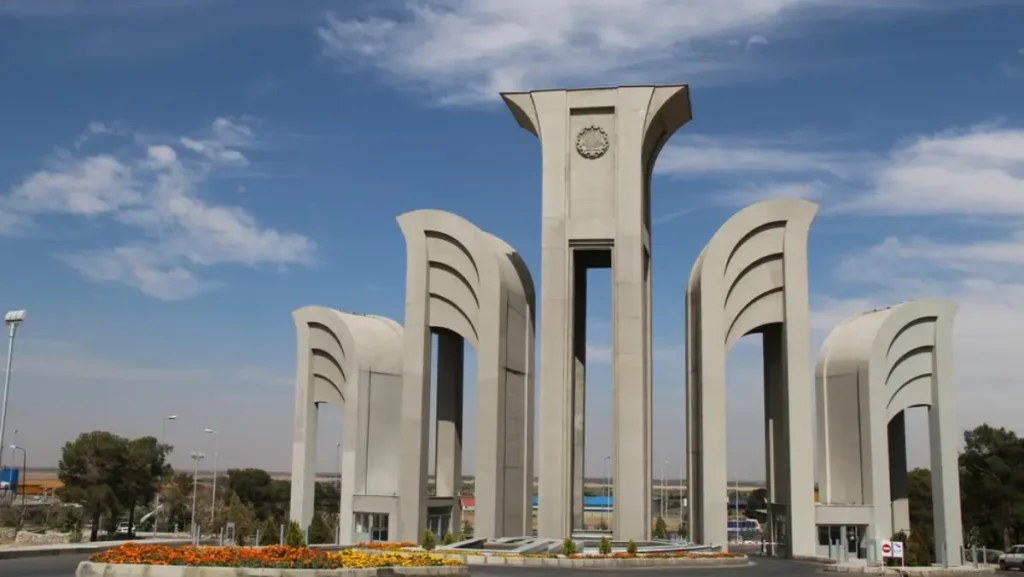
Language and Culture: The Challenges of Studying in Iran
One of the main challenges that international students in Iran may face is the language barrier. Persian (Farsi) is the official language of Iran. While many universities offer programs in English, knowing Persian can greatly enhance your experience and help you integrate more smoothly into Iranian society. International students are usually required to pass a language proficiency test before being admitted to a university.
Additionally, Iranian culture is quite different from Western culture, and students might experience culture shock when they first arrive. It’s important for international students to keep an open mind, show respect for Iranian customs and traditions, and be willing to learn and adapt to their new environment. Here, we’ll introduce two of the top institutes for learning Persian in Iran.
Dehkhoda Institute
If you’re interested in learning Persian, the Dehkhoda Language Institute is a well-established place for non-Persian speakers. Dehkhoda has a professional Persian Language Department that offers practical, conversation-based classes for all levels and various purposes. They use modern teaching methods to help students who need Persian for different reasons. Classes are available both in-person and online, and you can join from anywhere in Iran or even from abroad. Online classes are held on an advanced platform that allows students to interact through audio and video.
At Dehkhoda, courses are carefully supervised, and instructors provide regular reports on class progress. The institute also offers preparation courses for Persian language proficiency exams, ideal for those needing an official language certificate. For more specialized learning, there are advanced classes separate from general ones. These are designed for students who don’t need beginner-level classes unless they need a refresher in basic Persian.
Dehkhoda is known for its expert teachers and up-to-date resources, making it one of the best places for Persian language learning. For registration or more information, you can contact the institute.
Saadi Foundation
The Saadi Foundation, founded in 2012, is dedicated to teaching Persian worldwide. It has developed a comprehensive approach to Persian language instruction, with both in-person and online classes. The foundation also operates over 40 centers internationally, making it accessible to students worldwide. It connects non-Iranians with Iran, a country with a rich civilization that has long fascinated cultural and historical scholars.
The foundation has a structured five-step roadmap for teaching Persian. This roadmap outlines a step-by-step path for teachers and students, setting clear standards and methods for learning the language. Courses are divided into two types: general and specific-purpose classes. Each course type is adjusted to fit the age and language level of students, ensuring a tailored learning experience.
If you’re looking to deepen your connection with Persian culture, the Saadi Foundation provides a thorough and inspiring path to learning the language.
Visa and Immigration
Handling the visa application process as an international student can be a bit complex, especially if you’re new to the process. You’ll need to gather essential documents like your enrollment certificate, proof of financial resources, and health insurance coverage. Visa regulations may change, so it’s important to stay informed on any policy updates or changes.
At Visit Our Iran, we make the whole process easy for you. We help with everything—from applying to the university and securing your admission to getting your student visa, booking flights, and arranging housing. Our team is here to handle the details so you can focus on preparing for your studies and looking forward to experiencing life in Iran without worry.
For a complete overview of Iran’s student visa process, be sure to check out our article: Comprehensive Guide to Iran Student Visa.
